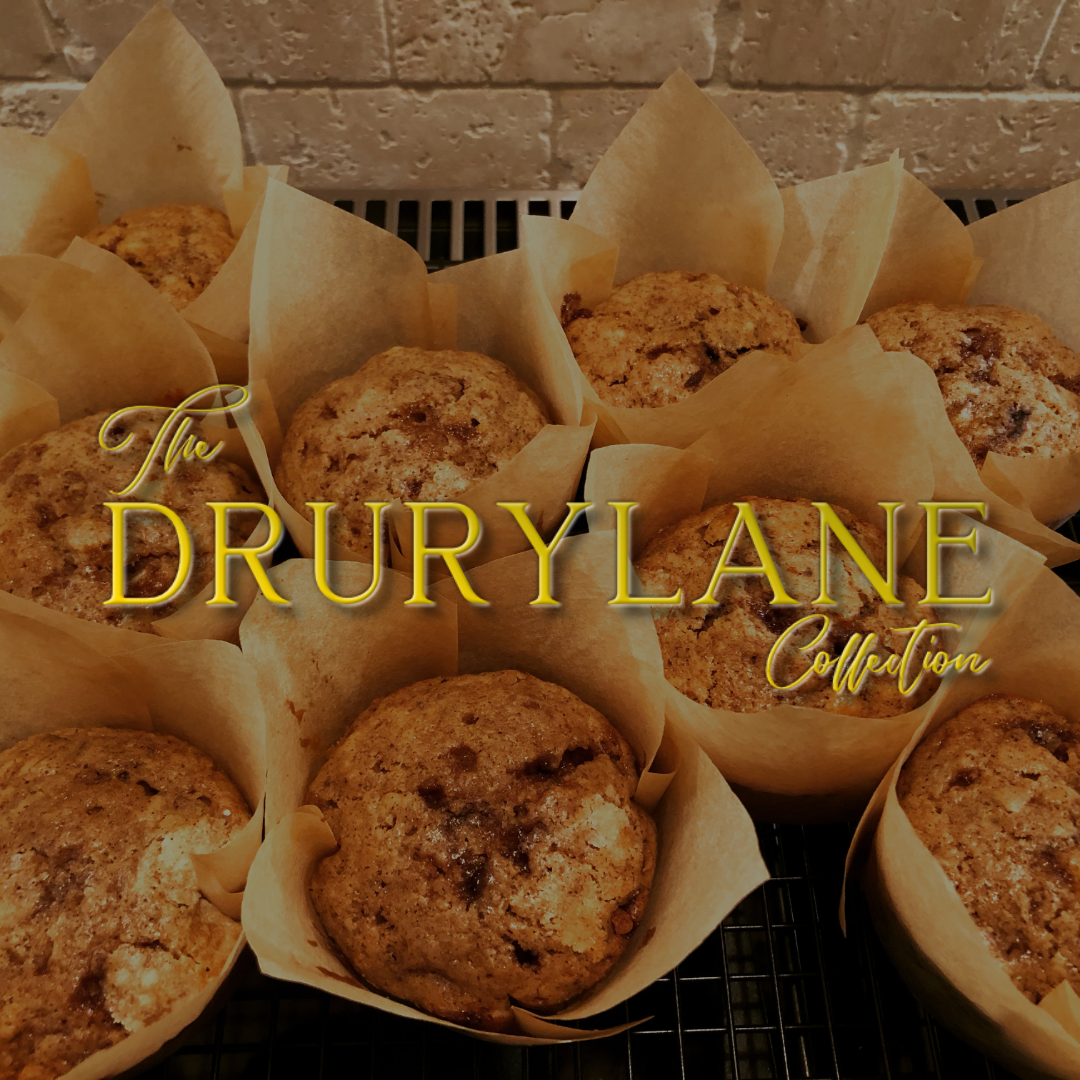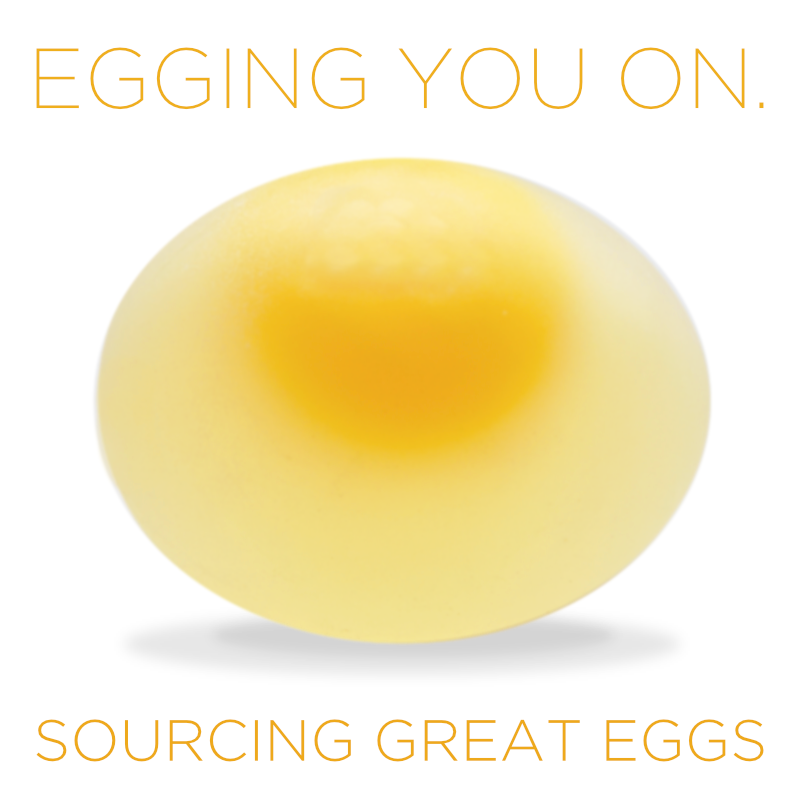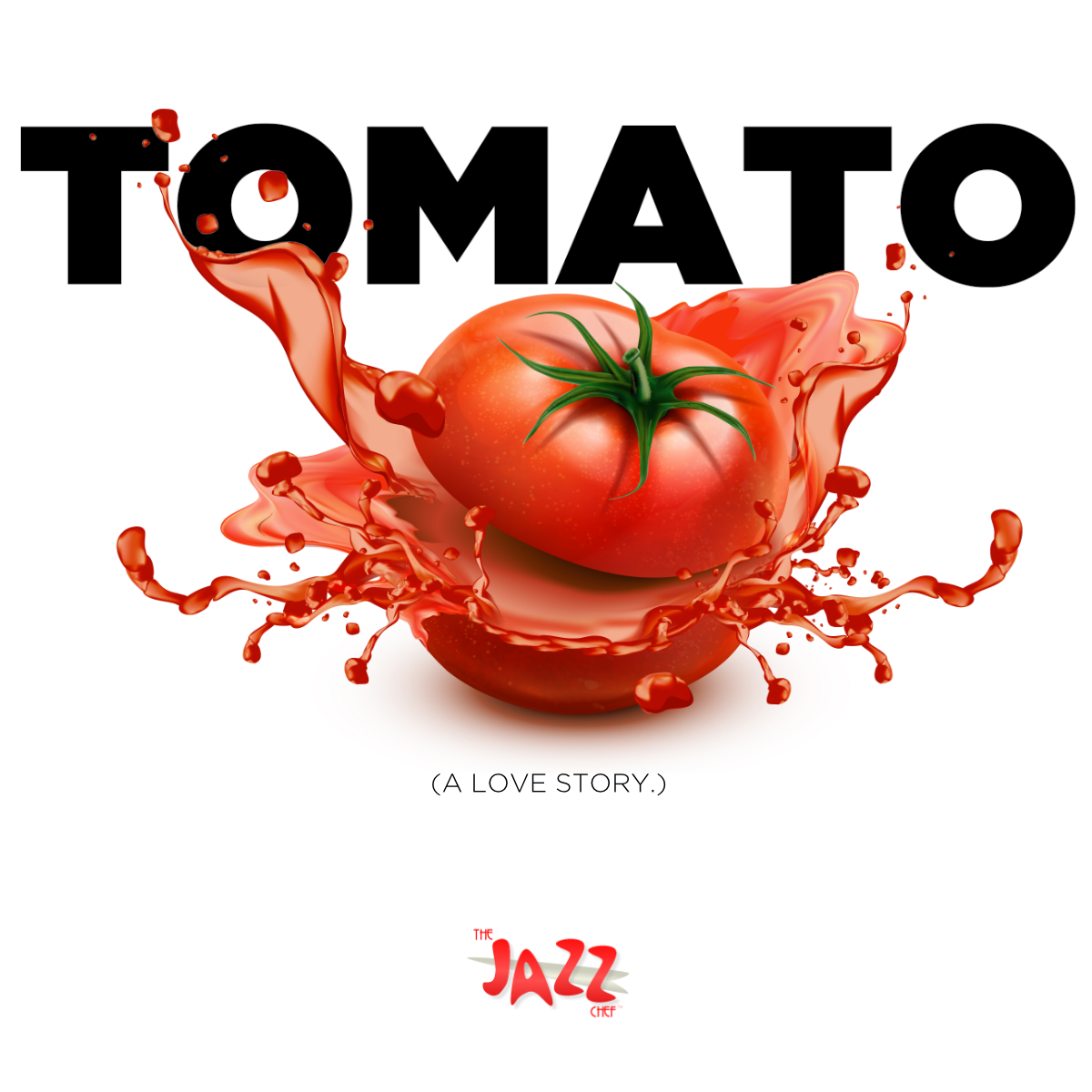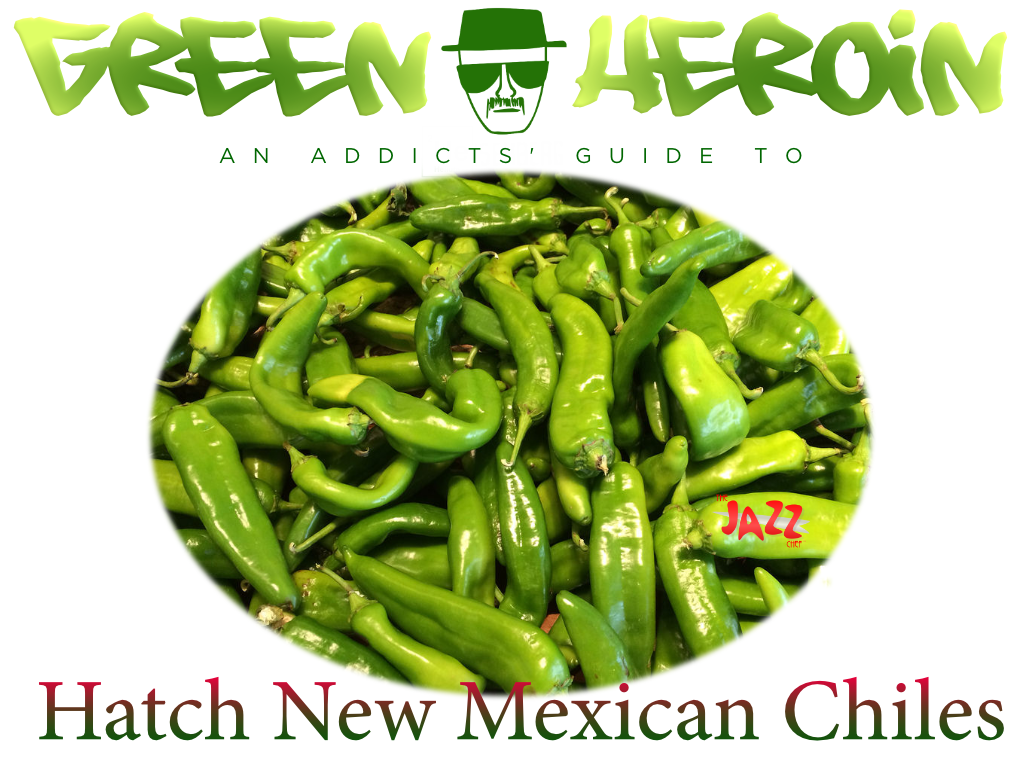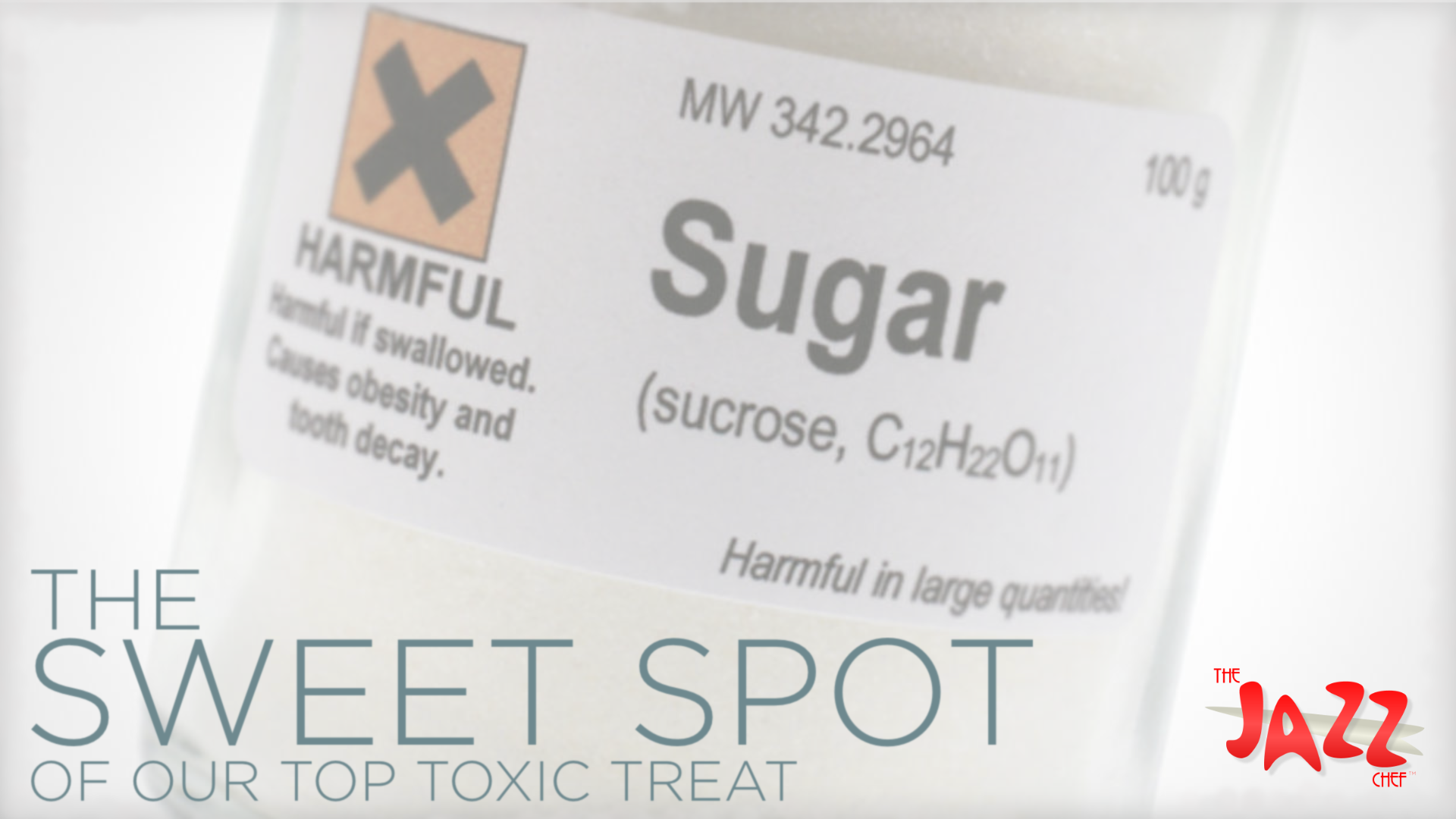
Humans love sugar. Our brains are wired to crave it.
Too much of anything is a bad thing, though. We consume a lot of processed sugars, particularly in the industrialized world’s many sweet treats, boxed and prepared “fast” foods. Fake “zero” or “low” calorie sweeteners account for $97B in sales annually!
I’m no nutrition nazi, no food fascist, so I’m not telling you to run around the house and purge every last sugar bowl, syrup container, and honey bear. Personally, I lost 32 lbs and live a lot better now by making smarter choices about how and when I take in sugar, and I still enjoy it, responsibly.
I will, however, tell you, unless you’re diabetic, and even then with grave reservations for your health, to dump every last “zero-calorie” sweetener, including “natural” ones like Stevia. More on the “why” of that in “The Science” below.
We are for the most part, what our parents taught us to eat. Some habits are great. Some are not. We have to come to a personal decision, and one for our families:
- What habits we want to maintain to live better and longer?
- What are we willing to do, as home chefs, to improve the way that we eat and live?
The core food in the human diet is sugar, or artificial sweeteners, or both. Let’s start with an understanding of the science of it that’s easy 101 for non-geeks.
THE SCIENCE
SUGAR 101
Sugar is energy. We eat a number of foods that give us energy, but sugar is a fast-metabolized type of “fuel” that gives us a big, happy energy rush, fast. Our blood carries glucose around to fuel up all of the important bits that keep us running.
The more fiber still attached to our sugars the better off that we are, because, when we purify sugar, a little or a lot, it’s bad for us. Much worse, though, are the “fake” sweetners, whether they’re natural or synthesized. More on that in a moment. Let’s start with how sugar works in your body.
Most white table sugar is sucrose, a blend of fructose and glucose. Reducing the process to a really simple view, if you consume a packet of sugar, the glucose is absorbed by your body and put to work pretty quickly. The fructose? It passes to your liver, the body’s filter for processing.
Fructose turns into three things: Triglycerides, a type of fat, uric acid, and free radicals.
BAD FAT & MORE
Triglycerides are the bad fats in your body. They can build up in liver cells and damage liver function. Dished off for storage, they form the bulk of that fat that stores in bellys, legs, and arms.
Triglycerides in your bloodstream contribute to fat-filled plaque the collects inside of your artery walls.
Uric acid production can stop the production of nitric oxide,which helps protect artery walls from damage. It can also trigger gout, kidney stones, and hypertension, to name a few bad effects.
Part of fructose turns into free radicals. They can damage cell structures, enzymes, and even genes.
Fructose can also insulin resistance, a precursor to diabetes.
All sweeteners at excessive levels are bad. There are some much better ones, but first, let’s talk about but two, in particular, that are standouts in the AVOID department.
HFCS/GLUCOSE-FRUCTOSE SYRUP
Since the 1970s, the introduction of a cheap commercial sweetener, High Fructose Corn Syrup (HFCS), or Glucose-Fructose Syrup (GFS), coincided with the purges of cheap fats from processed foods. Coincidentally, consumption of sugar in our diets soared, and so did obesity.
How bad is fructose? It’s fruit sugar, right? Fruit is good for you!
With fiber and natural acids, that is true. They’re nature’s “off” switch to consuming fructose, which can be very toxic to the liver, like alcohol. Much like alcohol, your liver can’t do much more with refined fruit sugars than turn them into an immediate fat.
The cost of cane and beet sugars used in sucrose, white table sugar, kept their use in foods very modest. HFCS/GFS changed that. Cheap, they found their way into all kinds of foods, from jams and jellies to bread and even the peanut butter.
In 2008, the American Medical Association cited “lack of sufficient evidence” to connect obesity to the overload of HFCS in our diet. By 2010, though, a body of research at Princeton and elsewhere began to find that linkage in animal studies.
“Some people have claimed that high-fructose corn syrup is no different than other sweeteners when it comes to weight gain and obesity, but our results make it clear that this just isn’t true, at least under the conditions of our tests,” said psychology professor Bart Hoebel, who specializes in the neuroscience of appetite, weight and sugar addiction. “When rats are drinking high-fructose corn syrup at levels well below those in soda pop, they’re becoming obese — every single one, across the board. Even when rats are fed a high-fat diet, you don’t see this; they don’t all gain extra weight.”
A 2010 study on the National Institutes of Health (NIH) archive suggests that your liver isn’t the only thing affected by HFCS/GFS. A lot of free fructose affects our brain. It may turn off our appetite control, and it may also affect our ability to think.
ZERO AND LOW CALORIE SWEETENERS

If you are reading this, smugly thinking that you don’t eat sugar because you consume a lot of “zero calorie” or low-calorie sweeteners like:
- Stevia
- Truvia®
- A Sweet Leaf®
- Sun Crystals®
- Stevia®
- PureVia®6
- Aspartame
- Nutrasweet®
- Equal®
- Sucralose
- N’Joy®
- Splenda®
- Saccharin
- Sweet Twin®
- Sweet’N Low®
- Necta Sweet®
- Acesulfame-potassium
- Sunett®
- Sweet One®
- Neotame
There is a bit of bad news for you, too.
Anything sweet that touches the tongue triggers your pancreas to create sugar receptors. The intensity of zero and low calorie sweeteners may fool your tongue, but those receptors that your pancreas produces don’t go away until they get some real sugar.
Instead of taking in less sugar, you take in more.
You might metabolize 60-80% of the sugars out of a piece of bread, because your tongue doesn’t detect much sugar in it. Suck down a diet drink, even days earlier, and your body digests that piece of bread in a way that might now absorb most or all of those sugars because there are receptors already waiting for it.
Eat a piece of pie with your Diet Coke®? The sugar has to come from somewhere.
There are other problems with alternative sweeteners. Most are 2x to 7x sweeter than a packet of table sugar (sucrose), so they create more receptors than a packet of table sugar. Your brain adjusts to the fake sweetness, and actually begins to crave it, because it keeps amping up your pancreas ability to take in sugar from other sources.
Research now shows that low and zero-cal sweeteners may speed up or trigger Type-2 Diabetes. They may also change the good bacteria in your gut to make your body glucose intolerant. There are studies that suggest that there is a growing body of evidence for zero-calorie sweeteners being the cause of a wider range of metabolic disorders and possibly adding to, not decreasing obesity.
WHY ISN’T ANYONE STOPPING EITHER SUGAR OR FAKE-SUGAR OVERLOAD?
How is that possible? How is it allowed? Our public health is at the mercy of large industries that produce these products, advertise broadly, and lobby politically, globally, to keep them on the Generally Regarded as Safe (GRAS) list, even if you consume their products at levels that may be toxic and/or create myriad health problems for you. Volume food producers use a lot of sugar to give their products appeal where fats, which are regulated, are no longer an option.
Often what is labeled by the government as Generally Regarded as Safe (GRAS) is Correctly Regarded as Poison (CRAP).
ARE THERE BETTER SUGARS?
Yes. The less processed that a sugar is, and the more of its natural fiber that it retains, it will provide sweetness without the hyper-purification of sucrose.
DEXTROSE
Dextrose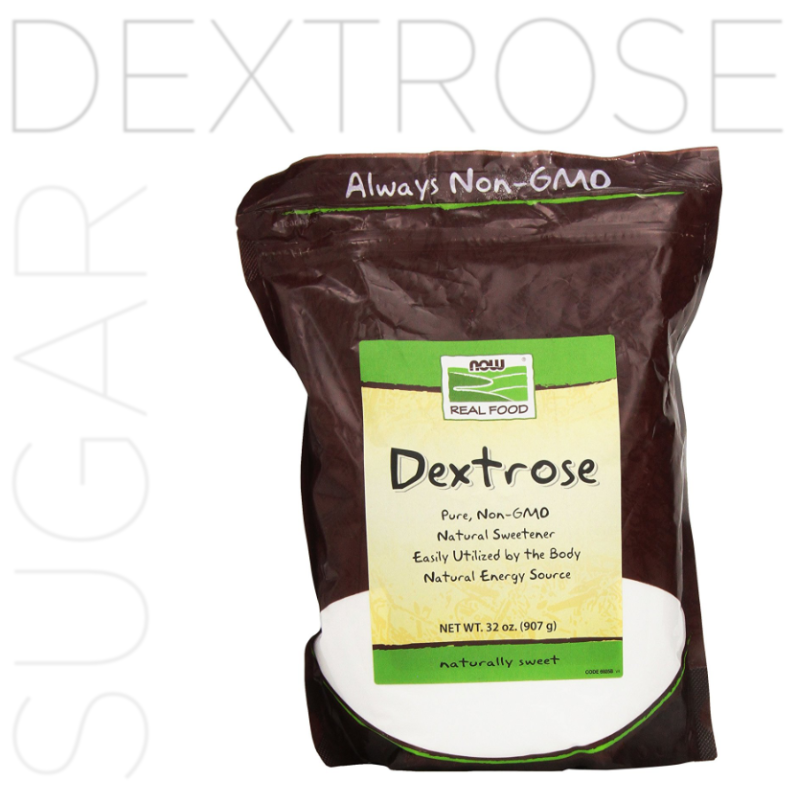 is another sweetener, often made from corn. It is identical, chemically, to glucose, or blood sugar. The body processes it easily. It can be used at 1:1 as a substitute for sucrose.
is another sweetener, often made from corn. It is identical, chemically, to glucose, or blood sugar. The body processes it easily. It can be used at 1:1 as a substitute for sucrose.
It is a good general all-purpose cooking sweetener. Used most often in baking, it also is used in some boxed product foods. Depending upon how much total sugar is in that food, it is a good alternative if you find a product with it.
It will be slightly less sweet in taste, so, to migrate from table sugar to dextrose, moving to a mix in your recipes, to lower your family’s expectations of the intensity of sucrose isn’t a bad idea.
MUSCOVADO SUGAR
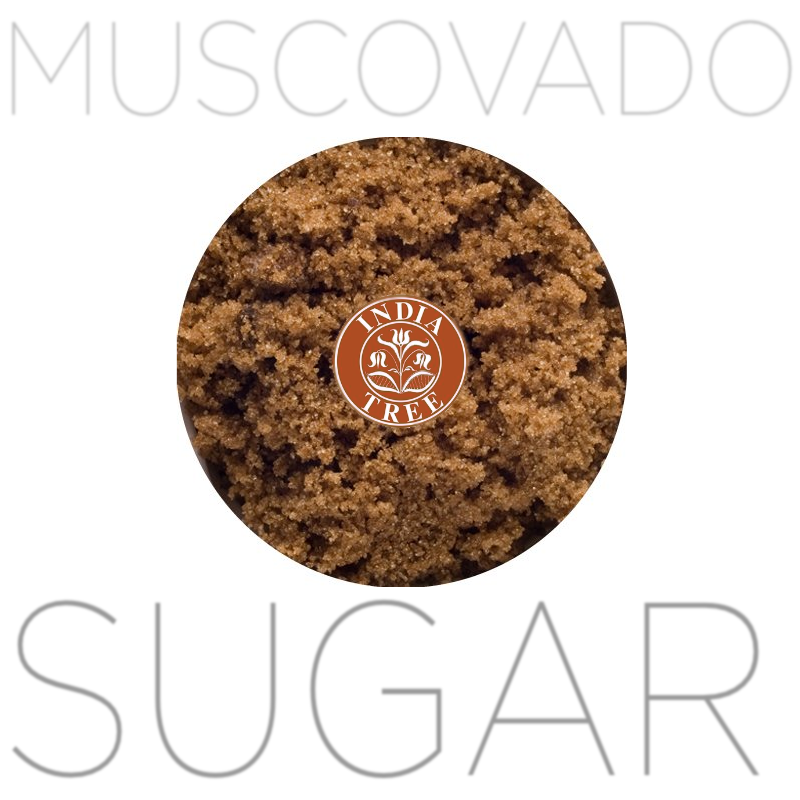 Most so-called “brown” sugars are just molasses poured into highly refined sucrose.
Most so-called “brown” sugars are just molasses poured into highly refined sucrose.
The most basic “brown sugar,” muscovado (Khandsari/Khand), is a partially refined or unrefined sugar with a lot of natural molasses content.
What Muscovado lacks that hyper-sweet sucrose punch, it makes up in a wonderful molasses-richness that will amp up the flavor of foods calling for brown sugar than sucrose-molasses brown sugars.
It is also higher in minerals and fiber than processed brown sugar.
RAW HONEY
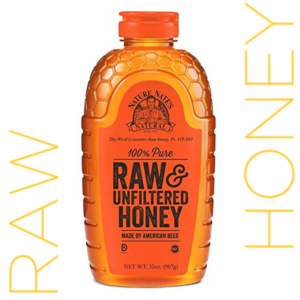 One of the best sweeteners is one of the oldest:
One of the best sweeteners is one of the oldest:
Honey.
Not all honeys are created equal. Developing the right blend is important. So is using a good raw. Pasteurized honey not only loses a lot of its nutrient value, but, at some point in the production process, substitutes can get snuck in, like HFCS or rice syrup.
When honey is minimally heated and filtered to get rid of impurities but preserve taste and nutrition, we have ourselves a winnah!
HOW MUCH SUGAR STOPS BEING GOOD FOR ME?
The World Health Organization (WHO) recommends 5% of total daily caloric intake, or about 24g / 6 tsp. a day. How does your country’s diet affect your consumption of sugars? Scroll down out our FoodFactzz™ chart to see where your country’s average daily intake of sugars stands:

As you can see, only a small slice of the world’s less developed countries are meeting the WHO guidelines for sugar, mostly because it’s a luxury item.
Our love of all things sweet, and our ability to mass produce a lot of sugary foods has lead to greater obesity and is being attributed to a number of diseases and causes of early death.
WHY REDUCED SUGAR INTAKE IS IMPORTANT
 Most of us know the more obvious connections between sugar, diabetes and obesity.
Most of us know the more obvious connections between sugar, diabetes and obesity.
Did you know that studies at Harvard and elsewhere suggest that there is a connective link from sugar to high blood pressure and heart disease?
There are also studies at Harvard and UCLA that link sugar and obesity to decreases in brain function, and early-onset dementia.
A 2012 animal study at the University of California at Los Angeles found a relationship between fructose consumption and the aging of cells.
A joint study of the University of Montreal and Boston College in 2009 found a link between excess glucose consumption and cognitive/memory problems.
SUGAR ISN’T JUST FOR SWEETS
When we think sugar, don’t just consider candy and ice cream, either. Your orange juice, fruit consumption, and a lot of packaged, canned, and frozen foods that you would never dream had sugar in them contribute to your sugar intake. 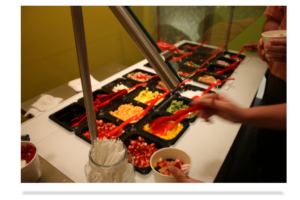
Frozen yogurt with a fruit toppings bar? Sounds healthy, right? 17g of sugar in a half-cup of frozen yogurt.
Add on a bit of fresh fruit and there is another 3-5g. 24g is the recommended daily intake. A half-cup of fruit-topped frozen yogurt is 70% of your daily total intake of sugar!
Sugar is found in a lot of less obvious places. It has been used, since the 1970’s, to “perk up” all kinds of savory boxed and pre-made frozen foods when fats became public enemy number one to doctors.
There are obvious sources like cereals and cookies and muffins, and we can suspect that sugary soft drinks are high in, well, sugar, but you’ll also find it in high concentrations in commercial tomato sauces, frozen foods, baked beans, and hundreds of items on store shelves that aren’t always even sweet-tasting. 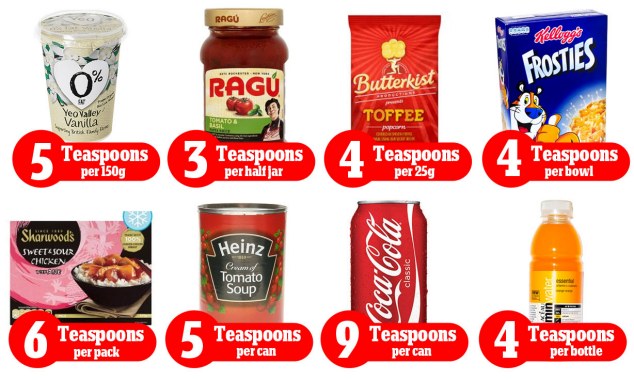 So if six teaspoons is our magic number for the day, one can of Coke throws us over the line by another 33%, and a frozen meal with a sweet and sour sauce can be our whole day’s intake!
So if six teaspoons is our magic number for the day, one can of Coke throws us over the line by another 33%, and a frozen meal with a sweet and sour sauce can be our whole day’s intake!
WHAT CAN WE DO BETTER?
- Read the labels. If you’re going to buy box and canned goods, don’t buy ones where sugar is in the top five ingredients, or toxic high fructose corn syrup, or a zero-calorie sweetener, is in the ingredient list at all.
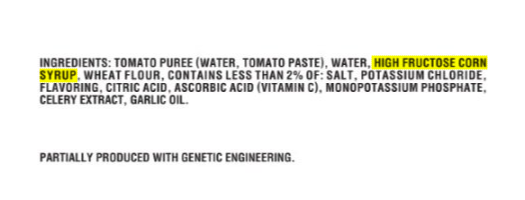
- Use less sugar, and better sugars:
- Keep to lower daily consumption goals. Can you live with 6 teaspoons a day? Even if you drop from the American average of 54g/1.9 oz of sugar a day to just half that, it’s a huge improvement;
- Use more minimally processed sugars like coconut, palm, turbinado, or muscovado that maintain more dietary fiber;
- Don’t drink purified juices without the fiber/pulp, or eat a high-fiber food like oatmeal alongside it with less juice in the cup.
- NO HFCS/Glucose-Fructose in Sauces & Condiments : One of our biggest sources of HFCS intake in the United States is cheap ketchup. Globally, other sweet sauces are being quietly converted to the cheaper, more toxic sweetener as Glucose-Fructose syrup. 75% of the sugar in Heinz’ regular ketchup is HFCS. Do not use them. Encourage restaurants that only offer the bad stuff to get the good, especially if they tout the good health of their food products! At home use any brand that is labeled as “organic” or “natural” that uses dextrose or cane sugar, in moderation. Eating out, and addicted to ketchup? Ask for Heinz Naturals (NOT Heinz Reduced Sugar, which uses a bad delayed-sugar substitute Sucralose) or Hunt’s, which took HFCS out of its products in 2010. Use a good true French Dijon and avoid Grey Poupon which has HFCS.
- Soft drinks: Cane sugar, and an occasional treat: Avoid daily consumption of sodas! Both Coke® and Pepsi® products other than their glass-bottled or cane-labeled sodas are loaded with HFCS. If you like something bubbly with lunch, consider things like sparkling waters infused with a bit of flavor that don’t have artificial or other “zero” fake sugars.
- Diabetic do’s and don’ts:
- Stick with Stevia – It’s a natural zero-calorie sweetener with fewer known side-effects;
- Use the same WHO guidelines for low-cal sweetener. Severely limit your intake. Stevia is two to three times sweeter than sugar, so, if the ideal is 6 teaspoons of sugars a day, it’s 1.2 to 1.8 teaspoons of Stevia.
- Avoid buying boxed, frozen, or canned pre-packaged meals and snacks – A lot of our sugar intake, along with salt, and a ton of preservatives, comes from foods where we wouldn’t suspect. Even “healthy” organic foods can have too much sugar. Like all rules, there are exceptions. Products identified as “low glycemic” offer you the ability to eat with less sugar. Just watch your total consumption.
- Make Your Own – You have far more control of food when you make it yourself. Things like baked beans, Sloppy Joes, drink powders, and even ketchup (catsup) are not hard to make, and making them from raw materials lets you figure out what’s right for your family, and save a chunk of money too!


